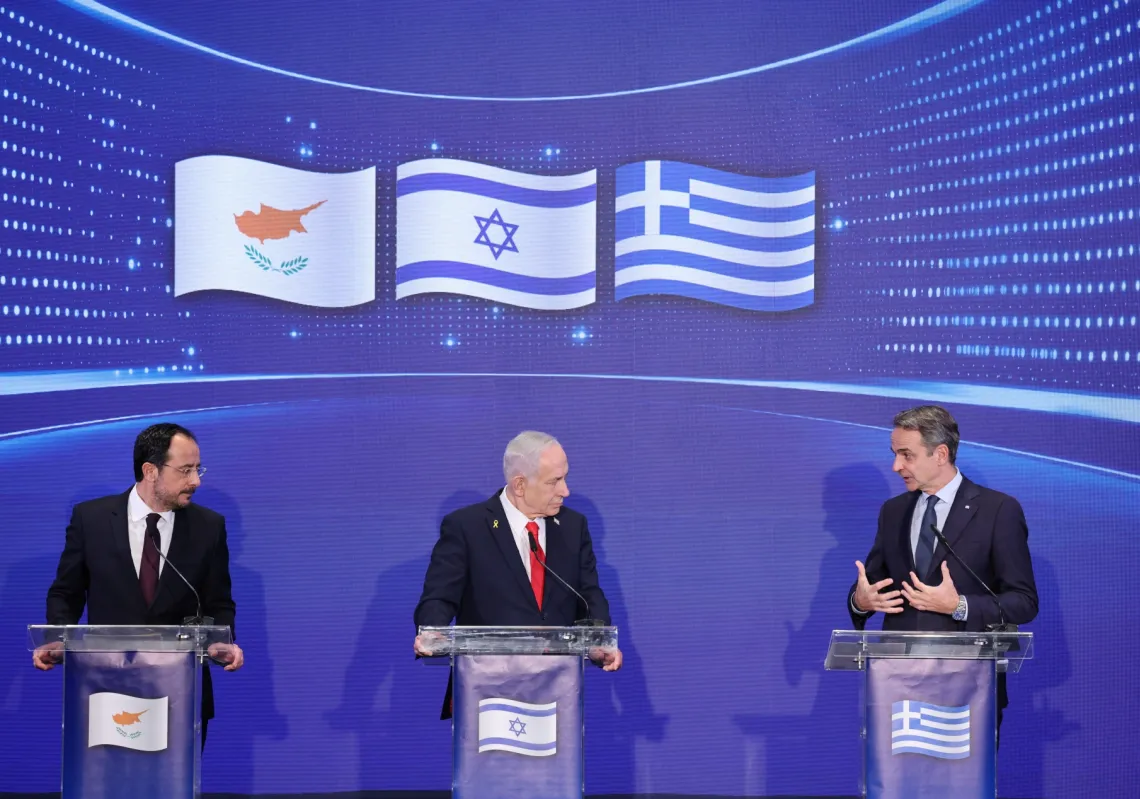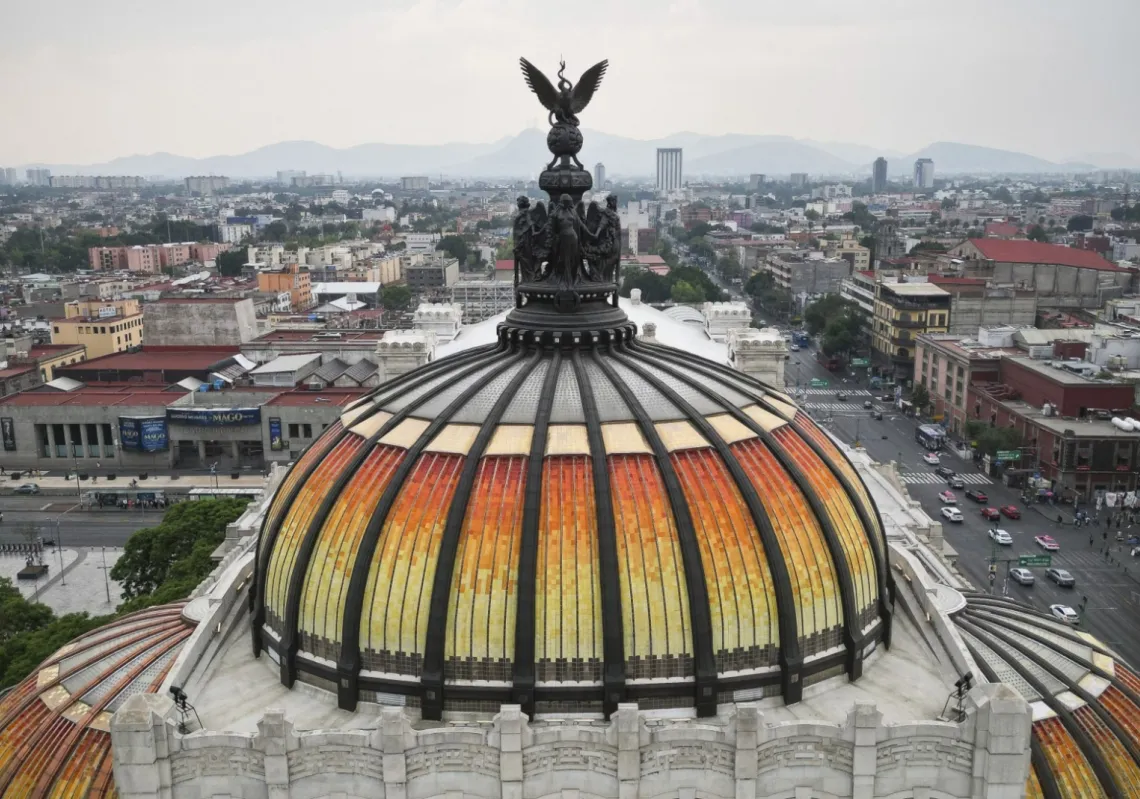“Queen Elizabeth II was the rock on which modern Britain was built. Our country has grown and flourished under her reign,” said Liz Truss, UK Prime Minister in her tribute to the late monarch who passed away yesterday at 96.
Following the official announcement by Buckingham Palace of the death of Queen Elizabeth II, the longest-reigning monarch of Britain, world leaders and public figures started to send their condolences and pay tribute to the late Queen.
Saddened by the news of their monarch’s death, mourning crowds have been flocking to Buckingham Palace in central London to keep vigil under dark rain clouds.
Queen Elizabeth II was the only sovereign most Britons have ever known, which indicates that the UK is on the “cusp of a new era,” as the royal author Catherine Pepinster told BBC News, adding that it is a “traumatic” moment for the country.

The late Queen’s son King Charles III made his first statement as a monarch following his mother’s death: “The death of my beloved mother, Her Majesty the Queen, is a moment of the greatest sadness for me and all members of my family. We mourn profoundly the passing of a cherished Sovereign and a much-loved mother.”
Flags on landmark buildings in Britain and across the Commonwealth were being lowered to half-mast as a period of official mourning was announced. The royal family’s website changed to a black holding page with a short statement announcing the Queen’s death.
The Church of England has said church bells are expected to be tolled across England this Friday. Parish churches, chapels and cathedrals are being encouraged to toll their bells and open their doors for prayer or special services following the announcement from Buckingham Palace. The British Parliament, as well as the delegated legislatures of Scotland, Wales and Northern Ireland, is adjourned.
According to accession protocols, within 24 hours of a monarch’s death, the new king should be formally proclaimed at St. James’s Palace in London by the “Accession Council.” This is made up of officials from the Privy Council, which includes senior Cabinet ministers, judges and leaders of the Church of England, who are summoned to the palace for the meeting. Charles must declare to Parliament on the first day of its session following the accession, or at the coronation, whichever is first, that he is a faithful Protestant. The oath is mandated by the Accession Declaration Act of 1910.
According to “London Bridge Operation” that details of what will happen in the 10 days following the Queen's death, the King receives condolences at Westminster Hall on the third day after death, after which he begins a tour of the United Kingdom, where the first assignment is to visit the Scottish Parliament.

The Queen’s body will be transported to London by Royal Train as part of a process known as the "unicorn" in the documents. If this is not possible, the body is flown in, and in both scenarios the casket is received by the prime minister and senior ministers.
On the fourth day after death, there is a rehearsal for the procession of the coffin from Buckingham Palace to Westminster Palace.
The royal family announces plans for the funeral, which will likely take place 10 days after the queen's death. The funeral takes place at Westminster Abbey. There is a two-minute silence at midday, and is buried at the King George VI Memorial Chapel in Windsor.
LIfe and LEgacy
Royal Family
Queen Elizabeth II was the monarch of the United Kingdom of Great Britain and Northern Ireland, as well as the Head of State of 16 Commonwealth realms from 1952 to 2022. She was the head of the House of Windsor, the reigning royal house of the UK, which was founded in 1917 by her grandfather King George V after he changed the house's name from Saxe-Coburg and Gotha due to the anti-German sentiment that was present in Britain during World War I.
The Queen was born on April 21, 1926, as the first child of Albert Frederick Arthur George and Elizabeth Angela Marguerite Bowes-Lyon who were then the Duke and Duchess of York. Prince Albert was the second child of King George V and was second in line to the throne after his elder brother Prince Edward. As such, Princess Elizabeth was expected to live the life of a minor royal with little chance of becoming queen. When King George V passed away in 1936, Prince Edward became King Edward VIII and as he had no children of his own, Prince Albert became first in line for the throne while Princess Elizabeth became second in line. Less than a year passed when Edward VIII abdicated the throne. Therefore Prince Albert was crowned as the new monarch and ascended the throne as King George VI with his daughter Princess Elizabeth becoming heir apparent.
Early Life and Education
Just like royals of her time, Elizabeth and her younger sister Margaret never went to a public school and were educated at home. Princess Elizabeth was taught by her father, a senior teacher at Eton College, and a number of French and Belgian governesses. She had lessons on history, language and literature, while she was taught religion by the Archbishop of Canterbury. Elizabeth’s schooling also included learning to ride, swim, and dance as well as the study of fine art and music.
The princess then joined the 1st Buckingham Palace Company as a Girl Guide in order to meet and interact with girls her own age.
The breakout of the Second World War in 1939 would dramatically change the life of the princess as well as the lives of all other children in Britain and around the world.

Her Effort in World War II
During the war, King George VI considered transferring his daughters to Canada in order to escape the dangers of German aerial bombing. However, their mother Elizabeth refused and the family stuck together as a unit in Britain. Instead, the princesses were moved to and from several castles in the country, before finally settling at Windsor Castle where they stayed throughout the remainder of the war.
Princess Elizabeth played her part to support the war effort in several ways, for example, she would perform pantomimes to help the Queen’s Wool Fund. She made her first public statement at age 14 in 1940 via the BBC’S Children’s Hour when she addressed children who had been separated from their parents during the Blitz. In 1945, Elizabeth was made a Subaltern in the Auxiliary Territorial Service, serving Britain during World War II, where she trained as a driver and mechanic.
A Royal Love Story
Princess Elizabeth first met Prince Philip of Greece and Denmark at a royal wedding in 1934. When the pair met again in 1939 and started to exchange letters, a romance blossomed between them. Princess Elizabeth and Prince Philip became engaged after the war in 1947. The couple married on November 20, 1947, and shortly before the wedding Phillip was named the Duke of Edinburgh. Elizabeth and her husband Prince Philip enjoyed a stable relationship for more than 70 years and had four children, Prince Charles, Princess Anne, Prince Andrew and Prince Edward. “He has been quite simply my strength and stay all these years,” the Queen said of Philip on their 50th wedding anniversary.
televised Coronation
After the death of her father King George VI in 1952, Princess Elizabeth would then ascend the throne and became Her Royal Highness Queen Elizabeth II.
Her formal coronation at Westminster Abbey on June 2, 1953, was very special because it was the first ever televised coronation of a British monarch and first major world event to be broadcast worldwide, when the ceremony was watched by an estimated 27 million viewers in Britain, and 277 million viewers around the world.
One Queen, Sixteen Prime Ministers
During her 70-year reign, Elizabeth II met with 15 prime ministers – Winston Churchill, Anthony Eden, Harold Macmillan, Alec Douglas-Home, Harold Wilson, Edward Heath, James Callaghan, Margaret Thatcher, John Major, Tony Blair, Gordon Brown, David Cameron, Theresa May, Boris Johnson and finally Liz Truss, whom the Queen asked to form a new government just four days ago.
Popularity of the Queen
Queen Elizabeth II is one of the most popular figures among all segments of the British public. Even when people started thinking that the Queen and the royal family were waning in popularity at the turn of the new century, several polls disproved such conjectures. For instance, a 2012 Ipsos Mori poll showed that the Queen had an approval rating of 90 percent.
Since her coronation, she has been an 'anchor in the storm,' guiding the country steadfastly through upheaval both personal (her children’s distressingly public marital struggles) and political (most recently, the Brexit vote). Queen Elizabeth II has become the keystone in the nation's architecture, a solid and immovable piece holding the country's image of itself in place.
Queen Elizabeth II has lived through some of the darkest days in Britain’s history, namely the Second World War. While most of her reign as Queen has been a time of relative peace, there were dark days where she stood firm in support of Britons.

She had a constant presence since the Suez Crisis of 1956, when Egypt's seizure of the Suez Canal highlighted Britain's declining power, through the 1980s labor strife and the 2005 terror attacks in London.
In 1974, the year of the three-day week, raging inflation, two general elections, and an IRA bombing campaign on the British mainland, the Queen saw herself as comforter-in-chief once more.
"We hear a great deal about our troubles, about discord and dissension and about the uncertainty of our future," she said. "My message today is one of encouragement and hope."
The 96-year-old matriarch needed her words and actions to be perceived as neutral and impartial in the fractured Britain of the 1970s.
When Windsor Castle, the Queen’s weekend residence, was ravaged by fire in 1992, criticism of the monarchy grew in response to reports of costly repairs. The Queen agreed to pay for the majority of her family's expenses and became the first monarch to pay income taxes since the 1930s. She also decided to open her home at Buckingham Palace to the public for the first time in order to generate extra funds from admission fees.
In 1997, after the death of King Charles’s ex-wife Princess Diana in a car crash in Paris, the Queen came under public pressure to demonstrate her grief, and made an unprecedented television broadcast in tribute to Diana’s memory.
Sense of Humor
Although Queen Elizabeth often gave the impression of being so serious, those who knew her said she had a mischievous sense of humor. Rowan Williams, the former Archbishop of Canterbury, has said the Queen could be “extremely funny in private — and not everybody appreciates how funny she can be.”
Factbox
- Last June, 96-year-old Queen Elizabeth II celebrated the 70th anniversary of her accession to the throne, making her the longest-reigning queen in her country's history.
- Queen Elizabeth II has visited more than 100 countries. In 2016, Buckingham Palace said she traveled 2,661.668 million kilometers to 117 countries.
- She appointed 15 prime ministers, starting from Winston Churchill to Liz Truss, and during this period 14 presidents came to power in the United States and 7 popes succeeded in the papal seat in the Vatican.
- The late Queen gave birth to four children, eight grandchildren and 12 great-grandchildren.
- She also sent more than 300,000 cards to people celebrating their 100th birthdays, and more than 900,000 messages to couples on their 60th wedding anniversary.
- The late Queen was a dog lover and had more than 30 corgis and Dorgies in her reign, most of them descended from her first corgi, Susan, who was introduced to Elizabeth when she was 18 years old in 1944.












